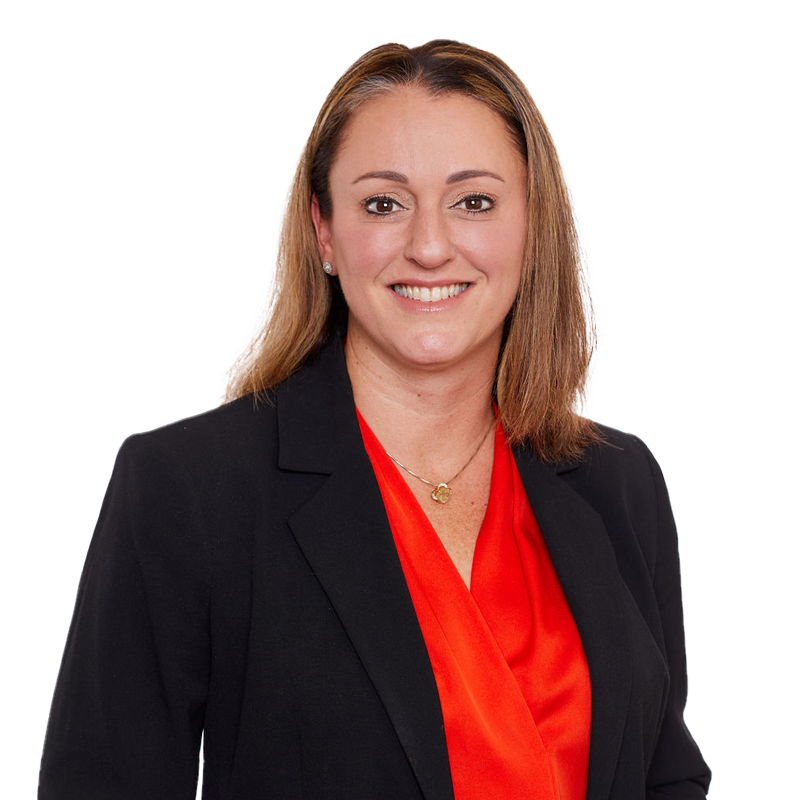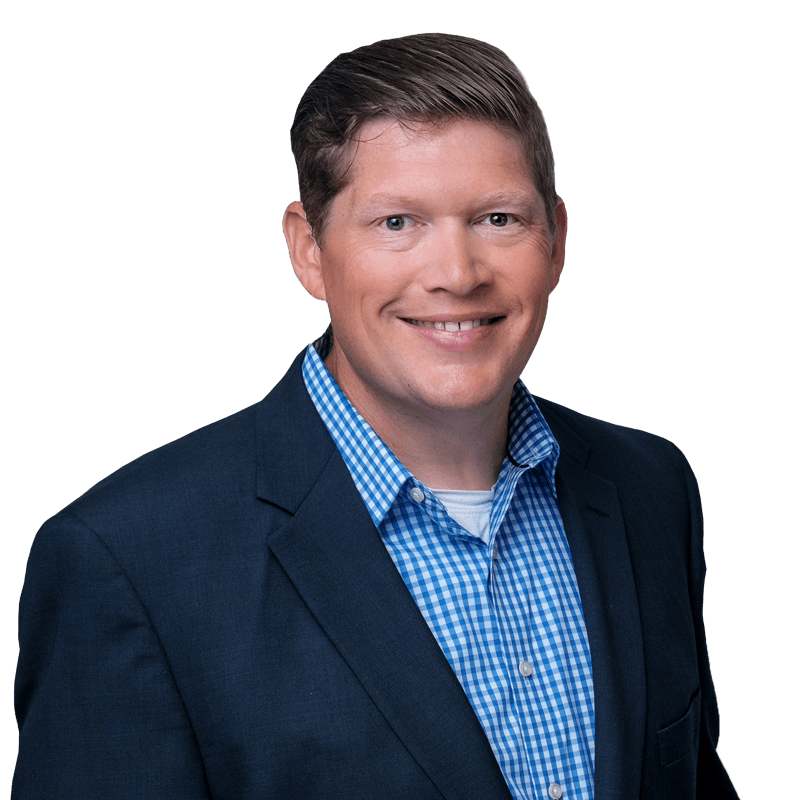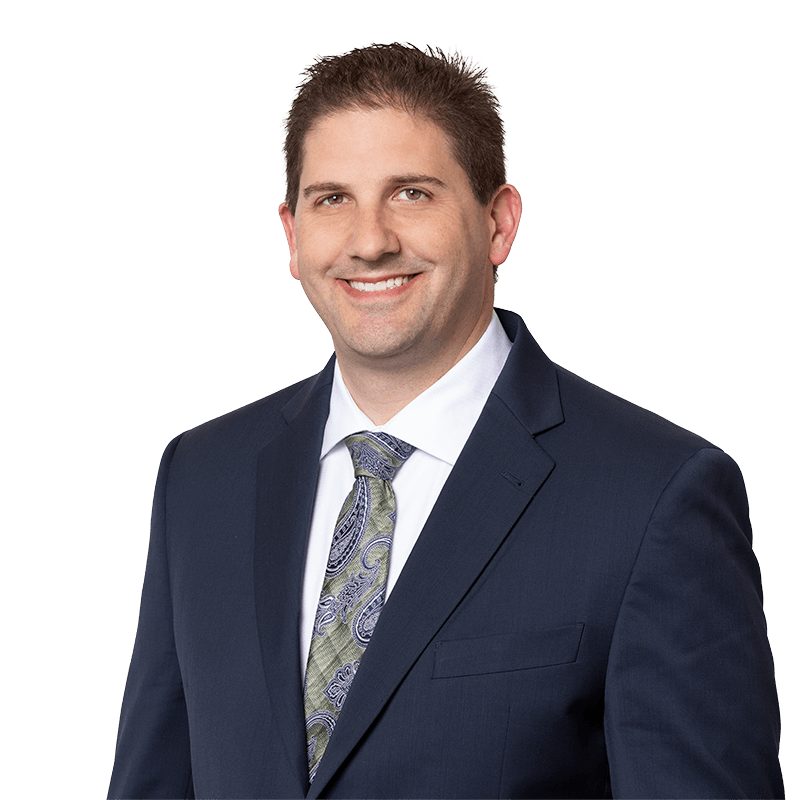
“It takes 20 years to build a reputation and five minutes to ruin it. If you think about that, you’ll do things differently.” – Warren Buffett

“It takes 20 years to build a reputation and five minutes to ruin it. If you think about that, you’ll do things differently.” – Warren Buffett
Alumni of University of San Diego (USD)
Passionate about networking & belongs to several groups
Enjoys hiking, biking & surfing
Traveling & camping with family
Will video conference with clients to make it easier
Windus is a third-generation Californian and second-generation San Diegan. She was raised in the community of Ocean Beach, which attributed to her love of the water. Today she still loves to surf and enjoys snorkeling and hiking. She is a supporter of the California State Parks System, is a Formula One racing fan, and loves to travel to exotic places with her husband, Kurt. They were married in Fiji in 2004, and have been avid travelers since.
Windus’ husband Kurt is a kidney cancer survivor (diagnosed in 2007). Kurt and Windus strongly support research to find a cure for cancer. Windus is a member of Imerman Angels, a non-profit group that pairs cancer fighters and survivors and the families for support in persevering through their diagnosis. Following Kurt’s cancer, the couple adopted their son Bradley in December of 2010, and then his little sister, Eloise, one year later. They are amazing children that bring nothing but joy to Kurt and Windus. Bradley was just 3 weeks old when they adopted him and Eloise was 5 weeks old when they adopted her. Kurt & Windus also have a deep love of animals and enjoy a large animal family with 3 chickens, 2 rabbits, and 3 dogs. Let Windus know if you ever need eggs!
Windus has firsthand experience with the complexities of estate management and understands the challenges fiduciaries and trust attorneys face with family dynamics. As a trustee on her grandmother's estate, she gained insight into these dynamics, further enhancing her ability to support clients in their planning and decision-making processes.
Coming from a family background in property management, Windus also wants to help build, create and foster an awesome culture for other professionals to grow their business. As a member of both the Exit Planning Institute (EPI) and Provisors, an elevated networking environment, Windus leverages extensive resources and expert networks to provide comprehensive exit strategies, ensuring maximum value and a smooth transition for business owners. She is also on the Board of Adjoin, a non-profit that specializes in creating pathways for individuals with intellectual & developmental disabilities. This organization is especially meaningful to Windus as her son has these challenges. Additionally, Windus is a National Charity League (NCL) member, actively participating with her daughter to support their community through philanthropic work.
Since joining Trilogy Financial in 2003, Windus has paired success with her commitment to the relationships in her life. She works with her clients to visualize the pathways to their success so they can decide which route is better for them and helps them change gears should their chosen pathway not be as productive as anticipated. Ultimately, she strives to help her clients understand that success isn’t achieved with the first plan but with their long-term relationship and commitment to work together.
Windus was honored by Forbes as one of the 2024 Best In State Wealth Advisors and one of the Top Women Wealth Advisors Best-In-State in 2024 and 2025. She is an Accredited Investment Fiduciary® (AIF®)*, and helps carry out a fiduciary standard of care and serves the best interests of her clients. She is also a Certified Exit Planning Advisor (CEPA®)* and is specially trained to help business owners create an exit plan. She is an Investment Advisor Representative with Trilogy Capital, Inc., where she holds her Series 65 Registration. She also holds her Series 6, 7 and 63 Registrations with LPL Financial, as well as holds a Life Insurance License.
*For definitions of designations, click here.



_____________________________________________________________________________________________________________________
Third-party rankings and recognition from rating services or publications are no guarantee of future investment success. Working with a highly rated advisor does not ensure that a client or prospective client will experience a higher level of performance or results. These ratings should not be construed as an endorsement of the advisor or by any client nor are they representative of any one client’s evaluation. Generally, ratings, rankings and recognition are based on information prepared and submitted by the advisor. A more thorough disclosure of the criteria used in making these rankings follows:
The Forbes Best-In-State Wealth Advisors 2024, Forbes Top Women Wealth Advisors 2024, and Forbes Top Women Wealth Advisors 2025 rankings are conducted by SHOOK Research, an independent organization that does not receive compensation from advisors, firms, media, or any other source for inclusion in the rankings. This advisor was selected based on SHOOK Research’s criteria and did not pay to be included on the list; however, they paid a fee to include their profile photo and contact information. SHOOK Research selects advisors who meet pre-determined minimum thresholds and maintain an acceptable compliance record.
The evaluation process incorporates both quantitative and qualitative factors. Quantitative factors encompass revenue, production data, assets under management, client-related metrics like retention, and assets quality. Portfolio performance is not a consideration due to varying client objectives and a lack of audited returns. Qualitative factors include interviews (telephone, virtual, and in-person), best practices, compliance records, service models, investment processes, fee structure, breadth of services, client impact, and community involvement.
For details on the number of nominations, selection process, and final rankings regarding the “Forbes Best-In-State Wealth Advisors 2024" ranking please click here. For details on "Forbes Top Women Wealth Advisors 2024" ranking please click here. For details on "Forbes Top Women Wealth Advisors 2025" ranking please click here. For definitions of designations, click here.
Scroll through to see each of the Advisors






By: Authority Magazine |
—
As a part of our series about the five things you need to successfully manage a large team, I had the pleasure of interviewing Windus Fernandez Brinkkord.
Windus is an senior vice president at Trilogy Financial, a national financial advisory firm. One of the things that sets Trilogy Financial apart from other firms is the dedication to cultivating a team that can best serve and advise everyday Americans. To Windus and her team, the term “everyday Americans” means everyone from hardworking employees to business owners and savvy investors, to new couples and more who want to build the businesses and lifestyles they dream. What Trilogy recognized was that in order to be a true fiduciary to its clients, they needed to be able to relate to them. And how better to relate to them than to build multi-generational teams that could relate to every family member, life event, dream and experience? Windus helped develop these teams within each Trilogy office while leading her local San Diego office to be one of the most successful offices in the company. Her dedication to her team has led to the success of her clients.
Windus Fernandez Brinkkord is a Registered Representative with, and securities offered through LPL Financial, member FINRA/SIPC. Investment advisory services offered through TC, a Registered Investment Advisor. TC markets advisory services under the name of Trilogy Financial (TF), an affiliated but separate legal entity. TC and TF are separate entities from LPL.
Thank you so much for doing this with us! What is your “backstory”?
I’m a third generation Californian and second generation San Diegan. I was raised in the community of Ocean Beach, which attributed to my love of the water. My husband is a cancer survivor and after his remission we adopted two babies, a brother and sister, and they are the joy of our lives.
My family has always been in property management, and after I spent some time in the industry, I realized I wanted to help build, create and foster an awesome culture for other professionals to grow their business. So I joined Trilogy Financial in 2003, and paired my determination with my commitment to relationships in my life.
I grew up at Trilogy and have really grown through management changes, industry changes and a company restructure that have all led me to the success I have today. Over that time, I went from being mentored to being the mentor. I used to reach out to so many of Trilogy’s top producers for help and bread crumbs on how best to succeed and then eventually, with their help, my career became the career I had always wanted. I couldn’t have done it without the guidance of so many people at Trilogy.
Today, I work with clients to visualize the pathways to their success so they can decide which route is better for them and help them change gears should their chosen pathway not be as productive as anticipated. Ultimately, I strive to help clients understand that success isn’t achieved with the first plan, but with their long-term relationship and commitment to work together.
Can you share the most interesting story that happened to you since you started your career?
I had met a person at a bazaar at their company, and they told me they were really interested in financial planning. So I called, left a message. Heard nothing. I called again and then again, and for 8 months I called to check in with them. Finally, they answered!
They had been in Africa for work and were so impressed with my follow through they became clients. Today, they are one of my largest clients and a tremendous referral source.
Can you share a story about the funniest mistake you made when you were first starting? Can you tell us what lesson you learned from that?
I don’t know that mistakes in financial planning are particularly funny, but I can look back on this one and giggle. I once asked me to wire them money for a trip, and I mixed it up. They then left on this trip! Instead of wiring it to them, I wired it out of their bank account. It was complete chaos, I had to reverse wires and chase them down while they were in the Bahamas on vacation. Lucky for me they are the nicest people and I was able to quickly correct it once I reached them. I learned that slowing down and doing things right the first time is critical, and it has made me a better advisor over time.
Ok, let’s jump to the core of our interview. Most times when people quit their jobs they actually “quit their managers”. What are your thoughts on the best way to retain great talent today?
I think one of the best ways to retain talent today is to be transparent and a good communicator. If you are transparent with challenges on the team and you’re proactive with an annual strategic plan, you are more likely to ensure everyone on the team is rowing the same direction. I believe that even in the best of circumstances “thinking things are fine” is definitely going to bite you in the toosh, so you should always be proactive. Often times, there are issues lurking within team. By having everyone aligned on the direction, goals and roles, you are more likely to see issues as they arise and can then proactively respond — instead of reacting after someone is disgruntled and leaving.
How do you synchronize large teams to effectively work together?
My experience is mostly with a team of 15 and below, though I have overseen much larger teams as well. Which is not very large, but I believe if you have a good strategy and process, it can be evolved for larger teams. The best way to get a team moving is to give your attention to the best workers — which is contrary to what we believe is natural. We often spend more time with the people who are under performing and work on improving them. However, I believe we need lift up and put attention on the top performers who will carry the team. It’s important to still give the underperformers guidance, but be aware of the pressure they cause the better performers when they can’t keep up.
Here is the main question of our discussion. Based on your personal experience, what are the “5 Things You Need To Know To Successfully Manage a Team”. (Please share a story or example for each, Ideally an example from your experience)
The 5 things I think everyone needs to successfully manage a team are:
What advice would you give to other CEOs or founders to help their employees to thrive?
The best piece of advice I have is to avoid being a control freak. Many of us feel that no one can do what we do as good as we do it…and that will be 100% accurate if you never give your team the chance to learn. Learning sometimes means mistakes and cleaning up their own messes, but then they become stronger and more capable faster.
You are a person of great influence. If you could inspire a movement that would bring the most amount of good to the most amount of people, what would that be? You never know what your idea can trigger. 🙂
Our mission statement as a company is to provide opportunities for people to live their best lives. When people know what they need to save, they know what they can spend and then they can spend with the freedom from guilt. That is the feeling of satisfaction that more people need, especially with money. This is a small but growing movement, and I’d love to make it much larger!
Can you please give us your favorite “Life Lesson Quote”? Can you share how that was relevant to you in your life?
My favorite life lesson quote is “do or do not…there is no try.” I hear this from my daughter all the time. And I tell her she will fail at 100% of the goals she never works toward. I believe people will eventually succeed when they put their mind to something. My old boss used to say “leave the word hope at church and when you come to work, get it done,” and it’s that same philosophy that I live and mentor by today.
Thank you for these great insights!
Starting and growing a business can be very challenging. While it’s possible to achieve some of your financial goals without consulting a financial planner, working with one can have more advantages to both your business and personal financial health. We spoke with experts who shared a few signs you need a financial planner.
Here are the top 21 telltale signs you may need a financial planner:
Click here to read the full story, featuring Trilogy Advisor, Windus Fernandez Brinkkord

Written by: Dan Rafter
You’ve worked hard to build your own business, and you love the perk of being your own boss. But going solo does come with one big challenge: It can be tough to save enough for retirement.
When you work for a company, you often have access to a 401(k) plan in which you can automatically deposit money for your retirement. It’s not as simple when you’re self-employed. When you’re working for yourself, you need to develop a retirement plan and stick to it. Otherwise, you may face a long, stressful retirement, worried you won’t have enough money to pay for the lifestyle you want.
Here are some tips for building a retirement nest egg even when you’re self-employed.
Kevin Gallegos, senior vice president of client enrollment in the Phoenix office of Freedom Debt Relief, said the biggest challenge self-employed people face when saving for retirement is that their monthly income fluctuates so often.
It’s hard to save when your income soars to $10,000 one month but then crashes to $4,000 the next.
“Income that fluctuates from month to month does make it harder to establish any regular budgeting and savings, but it is doable with a different approach,” Gallegos said.
That different approach? Gallegos recommends that those who are self-employed create a budget that’s based not only on dollars and cents, but on goals, too.
These goals may include being able to retire at a certain age, taking regular vacations, buying a new car or just having the time to take a daily walk. Once you write down these objectives, you can build your budget with them in mind, Gallegos said.
Your budget should list your mandatory expenses each month – everything from your mortgage payment to your car loan to the minimum you need to pay each month on your credit cards. It should also record those regular monthly costs that fluctuate: items such as your utility bill, groceries and transportation. Estimate what these are, and don’t forget to factor in the money you spend on discretionary expenses, such as eating out and entertainment. Finally, your budget should include your regular monthly income.
When you look at your income and your goals, you might decide it’s time to make changes. You may have to scale back some of your loftier ambitions.
“It might mean modifying the hoped-for China vacation to, say, San Francisco’s Chinatown,” Gallegos said. “But whatever happens, you’ll find that you will be spending smartly and getting where you want to go.”
Work into your budget a line item for retirement savings in your expenses area. Gallegos recommends you choose a percent of your monthly income to designate for savings. Take a portion of that amount and save it in an IRA or other retirement savings vehicle to help steadily build your reserve.
Tommy Valmeyer, chief executive officer of San Francisco-based digital marketing company OpenKit.io, said the biggest challenge for the self-employed is remembering to contribute to a retirement fund at all.
“When you have a standard 9-to-5 with a company, they can automatically contribute a portion of your paycheck to retirement,” Valmeyer said. “This is not the case for the self-employed.”
The best solution? Valmeyer recommends that self-employed individuals find a checking account that allows them to automatically submit a certain amount of money each month to a retirement account. The key is to make the commitment to this deposit, and to keep it going even when your business might not be booming.
Howard Dvorkin, a certified public accountant and chairman of Debt.com, said self-employed individuals need to consider all their options when it comes to saving dollars for retirement.
“Being your own boss is awesome, but being your own retirement savings plan can be a real downer,” he said.
If you work for yourself, you probably already know of traditional and Roth IRAs. But Dvorkin said many who are self-employed don’t know about the benefits of a “solo” 401(k) account.
This type of retirement savings vehicle, also known as a Self-Employed 401(k) or Individual 401(k), was designed for employers who have no full-time employees other than themselves and their spouse. In other words, it’s designed for people who work for themselves.
This 401(k) plan offers the same benefits as traditional versions. You can contribute up to $19,000 in your solo 401(k) plan in 2019 when contributing as an employee or up to $24,500 if you are 50 or older. When contributing as an employer, you can contribute up to 25% of your compensation. The total amount you can contribute to your individual 401(k) account, not counting catch-up contributions if you are 50 or older, is $55,000 in 2019.
If you are contributing as an employer, your contributions to the 401(k) plan are tax-deductible. If you are contributing as the employee, your contributions will reduce your taxable income.
Windus Fernandez Brinkkord, managing vice president in the San Diego office of Trilogy Financial, said self-employed people have several options when it comes to retirement savings vehicles.
Those who aren’t going to save more than $5,500 in a year will do well with a traditional IRA, Brinkkord said. Once these individuals are ready to save more money, though, Brinkkord recommends they invest in an individual 401(k) plan.
“Self-employed people often put so much back into their business they forget to save for their own retirement,” Brinkkord said. “In many cases, the business is them and, therefore, not sellable. Be cognizant of saving for yourself.”
When Jill Caponera was 25, she moved from New York to Los Angeles. That’s when the money trouble began.
“The cost of moving and everything that goes along with a move are kind of how my financial pitfalls started,” Caponera says. “I was looking for work for quite a few months, and once I found work, I wasn’t being completely responsible with my credit card.”
Before she knew it, she had $5,000 in credit-card debt, and her credit score had plummeted to 600. “It seemed like out of nowhere it snowballed out of control,” she says. “It made me really stressed out and worried about how long it was going to take me to pay off this debt.”
But now, five years later, Caponera, now a senior PR manager with Promocodes.com, has $20,000 with a credit score of 805. She’s planning to start mortgage shopping soon, and has been told she’s “highly qualified.”
The world of finance is tricky to navigate. With so many options available for your investments, it can seem complicated and daunting when trying to plan for your financial future.
The three buckets principle is a way of simplifying the complex and is suitable for people with substantial savings as well as people who are just starting out. Whether you’re well established in your career or fresh out of college, setting up your three buckets should be a priority.
How does it work?
The three buckets are:
Bucket 1 – Emergency funds
Expect the unexpected and make sure you’ve planned financially for it.
Unanticipated costs can be devastating financially. Getting laid off work, writing your car off or escalating medical costs, for example, can set you on the financial back foot for many years.
Bucket number 1 creates a buffer of cash that is only to be used for such emergencies. By having this bucket available, it means that should the need arise you won't be dipping into other savings or going into debt to cover the cost.
How much to save in your emergency fund bucket
Aim to have 3-6 months’ worth of living expenses here. Add up all your monthly costs, such as mortgage, bills, transport costs, and groceries, and that will give you the total to aim for.
Bucket 2 – The goal bucket
This bucket is for your short to mid-term financial goals. Savings for your kid's college, a down payment on a house, or even saving for a vacation can go in this bucket.
How much to save in your goal bucket
This is effectively disposable income so anything left over after you’ve attended to your monthly outgoings and buckets 1 and 3 can be added to bucket number 2.
If you've managed to fill bucket 1 already, you can use that cash to start filling bucket 2.
Bucket 3 – Retirement bucket
It's never too early to start saving for retirement, so you should aim to have this bucket set up as soon as you possibly can, ideally, as soon as you enter the workforce.
How much to save in your retirement bucket?
Aim to save 15-20% of your gross income for retirement. If your company offers a 401(k) plan, deposit part of your bucket 3 money there. If you don't have access to a 401(k) plan, consider a Roth or traditional IRA to maximize your investment.
Bucket 3 is made for investing as you want to maximize your returns for your golden years.
These three buckets will help you successfully save for your future. It's a good idea to attend to buckets 1 and 3 first. Once you have them filling nicely, you can look to start filling bucket number 2.
This simple strategy is easy to follow yet priceless for effective financial planning. If you haven’t got yours set up yet, make it a priority to do so.
The opinions voiced in this material are for general information only and are not intended to provide specific advice or recommendations for any individual.
Contributions to a traditional IRA may be tax deductible in the contribution year, with current income tax due at withdrawal. Withdrawals prior to age 59 ½ may result in a 10% IRS penalty tax in addition to current income tax.
The Roth IRA offers tax deferral on any earnings in the account. Withdrawals from the account may be tax free, as long as they are considered qualified. Limitations and restrictions may apply. Withdrawals prior to age 59 ½ or prior to the account being opened for 5 years, whichever is later, may result in a 10% IRS penalty tax. Future tax laws can change at any time and may impact the benefits of Roth IRAs. Their tax treatment may change.
There are so many passwords that people need to remember these days. You have your online passwords, your wi-fi passwords, the passwords you use at work, and more. It can be enough to drive you crazy. By the time you think of yet another original password, you have forgotten the last one. It can be a little easier, however, if you follow the following Dos and Don’ts. DON’T use a password that is easy to guess. That means no password 123 or admin 2018. Don’t use something anyone could figure out, like your birthday, dog’s name, or your address. DO choose a password that only you could figure out, such as the embarrassing moment you never told anyone about or the name of the fish you overfed as a child.
DON’T share your password. Unless it is an account that you and your spouse share, there is no reason to give your account information to someone else. Remind your kids of this too. Many kids give their passwords to friends, which can lead to trouble down the line.
DO make sure your password has a combination of uppercase letters, lowercase letters, numbers, and special characters. Each website will have their own rules about what is required. Make sure it is at least six characters long, too, because length can contribute to the security of the password. For example, sTE”vE218 is a lot harder to crack then STEVE218. The trickier you can be the better.
DO use underscores or spaces. If the system will allow you to, this is a great choice. Not many people who are trying to guess a password will consider spaces or underscores. Trying to decide where you inserted them is even harder.
DON’T use the same password for multiple accounts. If someone is trying to steal your information and they figure out one password, you don’t want them to have the keys to your kingdom. It is much smarter to have a different password for each site to protect your assets.
DON’T make your password so difficult that you cannot remember it. If you notice a spider outside the window as you set your new work password and you make your password SPIDER875, there is a good chance that you will not remember it the next day. While the password has to be hard for other people to guess, it should be easy for you to remember.
DO have a password to protect your passwords. If you have all of your passwords saved to your computer and you are the only one that uses your computer, you can add a second layer of protection. Choose the option to have a password on your laptop. Then you can allow Google to save your passwords for each site you visit, but no one can access them because your laptop itself is password protected.
The opinions voiced in this material are for general information only and are not intended to provide specific advice or recommendations for any individual.
Insurance is a necessary component to creating a financial plan that works well for you, your family, and your long-term goals. It can take just one illness, one job loss, or one car accident to turn your world upside down and crumble your financial plan.
If you have the proper insurance in place from the start, however, you can weather these life-changing moments and keep your goals and dreams on the right trajectory.
Disability insurance is important because it keeps your household operating during a long absence from work due to illness or injury.
Now is the time to make sure all of your “insurance ducks” are in a row. Catastrophe may never hit, but if it does, you want to make sure that you and your family are covered.
The opinions voiced in this material are for general information only and are not intended to provide specific advice or recommendations for any individual.
When planning for retirement, you need to look at multiple sources of income and be sure that some of the income sources are tax-free. The more, the better. So, how do you plan for a retirement income stream that minimizes overall taxation?
Four Instruments that Provide tax-free Retirement Income
Here are four great ways to provide yourself with tax-free.
If you do qualify, money put into a Roth IRA is taxed when you receive it, so it is not taxed again when it is withdrawn. In 2018, the eligibility requirements are:
There is no income limit to investing in tax-free municipal bonds and funds.
Following the rules about which expenses are reimbursable, no taxes are paid on withdrawals.
In addition, the HSA funds and earnings can be held until retirement then uses to provide tax-free income by reimbursing the holder for past and current allowable expenses which include Medicare premiums.
Making the Most of Your Home
Another way to make a smart investment for your retirement is to pay off any mortgage that you have on your home before you retire which allows you to live in your home for the cost of property taxes and home insurance alone.
For many retirees, this is a huge reduction in their monthly expenses allowing the money be used elsewhere.
We believe that real Life Planning is progress, not perfection.
Financial Life Planning is about actually starting — taking a few good steps in the right direction and then taking a few more.
Financial Life Planning is fundamentally about taking a few good steps in the right direction and then taking a few more. Trilogy Financial has established regional offices from coast to coast with the clear vision of helping millions of Americans pursue financial independence, every day.
Some advisors associated with this material are registered representatives of LPL Financial (LPL) and are Investment Advisor Representatives (IAR’s) for Trilogy Capital Inc. (TC). Some IAR’s of TC are not registered or affiliated with LPL. Securities offered through LPL. Member FINRA/SIPC. Investment advisory services offered through TC, A Registered Investment Advisor. TC markets advisory services under the name of Trilogy Financial (“TF”), an affiliated but separate legal entity. TC and TF are separate entities from LPL. The LPL Registered Representatives associated with this site may only discuss and/or transact securities business with residents of the United States.